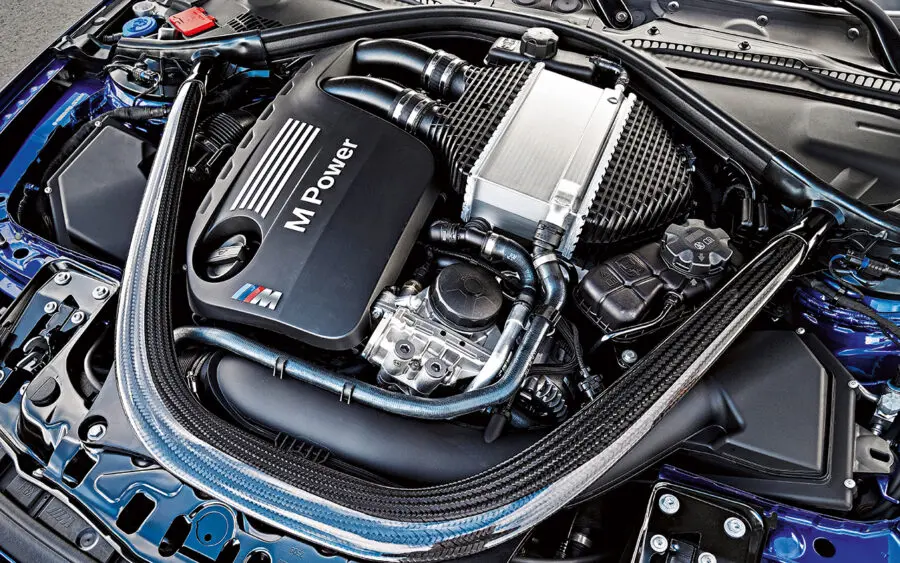Unveiling the Intricacies of Next-Generation Power Units: a Deep Dive Into Advanced Engine Technologies and layouts
In the world of automotive design, the unrelenting quest of effectiveness, sustainability, and performance has actually thrust the advancement of power systems to unmatched heights. As we stand on the precipice of a brand-new age in transportation, the complexities of next-generation engine designs bid us to discover the innovative innovations and innovations that assure to redefine the driving experience. From innovative products that push the borders of resilience and weight decrease to advanced turbocharging and supercharging systems that boost power result to new levels, each component of these power units holds a key to opening the future of auto design. Diving deeper right into the worlds of discharge control, intelligent engine administration systems, and the horizon of power unit advancement, we discover ourselves on the cusp of a makeover that assures to reshape the landscape of mobility as we understand it.
Evolution of Engine Products

The change towards advanced engine products has actually additionally allowed designers to design engines with greater power results while preserving gas performance requirements. The use of light-weight products minimizes the total weight of the engine, leading to boosted fuel economy and reduced exhausts. In addition, advancements in products technology have actually enabled far better thermal administration within engines, resulting in increased reliability and durability.
Turbocharging and Supercharging Technologies
Exactly How do Turbocharging and Supercharging Technologies transform engine performance and performance in modern cars? Turbo charging and turbocharging are innovations that considerably enhance engine efficiency by boosting the amount of air consumption into the burning chamber. Turbocharging accomplishes this by utilizing a turbine driven by exhaust gases to pressurize the consumption air, while supercharging makes use of a belt- or chain-driven compressor to accomplish the same impact.
These innovations allow smaller sized, a lot more fuel-efficient engines to produce power comparable to bigger ones, recognized as downsizing. By compeling more air right into the cylinders, turbocharging and turbo charging enhance combustion efficiency, leading to raised horse power and torque result without a considerable rise in engine dimension. This causes much better velocity, towing capacity, and total driving efficiency.
Moreover, turbocharging and supercharging add to improved gas performance by allowing the use of smaller sized engines that eat less fuel under typical driving problems - bmw engine. This mix of enhanced performance and performance has actually made turbocharging and turbo charging important parts of numerous contemporary engine layouts
Emission Control and Environmental Impact
With enhancing international problems regarding air high quality and ecological sustainability, the execution of exhaust control technologies in vehicles try these out plays a vital duty in decreasing dangerous toxins launched right into the atmosphere. Modern cars are furnished with advanced discharge control systems that assist lessen the ecological influence of auto procedures. Catalytic converters, for circumstances, are made to transform hazardous gases such as carbon monoxide gas, nitrogen oxides, and hydrocarbons right into less dangerous compounds like carbon dioxide and water vapor.
Additionally, developments in engine innovation, such as the integration of exhaust gas recirculation systems and selective catalytic reduction, have actually dramatically added to reducing discharges. These technologies work in tandem to optimize burning effectiveness and reduce the release of harmful pollutants right into the air. Furthermore, the development of crossbreed and electrical cars represents a crucial action towards reducing the total ecological footprint of the transportation field.
Intelligent Engine Monitoring Solution

In addition, these systems allow vehicles to satisfy stringent exhausts standards without endangering performance, supplying a more eco friendly driving experience. The combination of expert system and artificial intelligence capabilities in engine administration systems proceeds to push the borders of what is possible, causing more enhancements in performance, reliability, and general lorry performance. bmw engine. As vehicle technology developments, smart engine management systems will play a critical role in shaping the future of transport in page the direction of a more efficient and sustainable direction
Future Trends in Power System Growth
As intelligent engine administration systems pave the way for improved control and optimization in contemporary cars, future patterns in power unit development are positioned to redefine the landscape of automobile propulsion technologies. These different power sources offer boosted efficiency and performance while aligning with rigid ecological guidelines.
One more go to my site considerable fad is the combination of sophisticated materials and producing methods. Lightweight materials such as carbon fiber and aluminum are being used to minimize general lorry weight, improving gas effectiveness and efficiency. Additionally, advancements in 3D printing and additive production are making it possible for the manufacturing of complex engine parts with higher accuracy and longevity.
Moreover, fabricated knowledge and artificial intelligence are playing a critical function in optimizing power device performance. These modern technologies enable real-time surveillance and adaptive control, bring about a lot more efficient and trusted power shipment. Overall, future patterns in power device advancement are tailored towards effectiveness, efficiency, and sustainability, driving the auto industry towards a brand-new era of propulsion innovations.

Verdict
In final thought, the innovations in engine materials, turbocharging, exhaust control, and intelligent monitoring systems have actually led the means for next-generation power units. The elaborate styles and technologies in contemporary engines display the ongoing evolution of automobile innovation.
Checking out the dynamic advancements in engine materials has been critical in improving the efficiency and effectiveness of contemporary engines. Over the years, the development of engine materials has played a critical duty in pressing the borders of what engines can attain.The change towards progressed engine products has likewise allowed engineers to develop engines with higher power outputs while maintaining gas performance criteria.The execution of smart engine administration systems in contemporary vehicles has revolutionized the means engines are regulated and enhanced for performance and efficiency. By gathering information in real-time and analyzing it with innovative formulas, intelligent engine management systems can adjust to driving designs, environmental factors, and engine wellness to make the most of power output while minimizing gas usage and discharges.